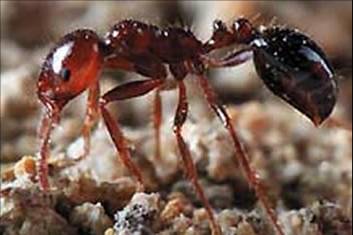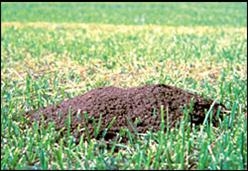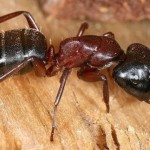READY TO GET STARTED?
REQUEST A FREE ESTIMATE
Fill out the form below or call (888) 466-7849 for a free, no-obligation estimate.
Community managers, property managers, and homeowners associations are in place in communities to enforce bylaws, maintain safety, maintenance and upkeep, and the general property value of a community. This is no easy task. The management teams above have their work cut out for them. It can difficult to deal with so many different trades in order to maintain a community. But with Northwest Exterminating, community managers can check pest and termite needs off of their list of worries.
Northwest Exterminating has a team in place that specializes in the pest and termite needs of management companies. Our Community Management Services Team is familiar with the demands of management companies and is in place to assist them with: termite control, pest control, mosquito control, wildlife control, fire ant control, and carpenter bee control. We provide pest and termite services for single-family detached housing, multi-unit housing, clubhouse, amenity buildings, and condominiums.
With professional representatives, ongoing training of staff, convenient billing, repair warranties, multiple locations throughout Georgia and Tennessee, and over 60 years of experience, Northwest is community manager’s choice for pest control.
For more information on how Northwest Exterminating’s Community Management Services team can help you, visit us online or call us at 888.466.7849.
People love a good myth. These narratives contribute bright symbolism of interactions between higher powers, people, and nature. They assist in many relevant functions as well as further adding colorful stories. One valuable role of myths is to illustrate some angle of life.
Several myths describe the beginnings, morphology, and conduct of various insects. Here are just a few:
The origin of mosquitoes is revealed by The Tlingit Indians of North America. The narration tells of a blood sucking carnivorous giant who dines on humans. This giant is eventually avenged after his horrific death by coming back to feed on humans in the appearance of blood sucking mosquitoes.
An Algonquin tale of North America justifies why bees, wasps, and hornets have stingers. This myth grants that the god Wakonda bestowed stingers to bees because the bees were industrious, but required a defense. Since wasps and hornets are linked to bees, The Great Spirit willingly endowed them with stinging weapons as well.
Ant actions are revealed in an African myth that reminds us of the everlasting punishments of Atlas, Prometheus, and Sisyphus of classical mythology. An infinite punishment of bearing a burden is handed down to ants by deception in the African myth. Accordingly, we see the outcome today in ants repeatedly transporting things in their everyday routine.
And on an absolutely universal spectrum, the composition of our galaxy, The Milky Way, is translated in an insect myth of the Cochiti. This myth tells of an Eleodes Beetle that was in charge of depositing stars in the sky. The stars were dropped due to his ego and recklessness, thus forming the Milky Way. The beetle was so distraught at what he had done, that even today, the beetle hides his face in the dirt when approached – will lower its head, raise its abdomen, and emit a disagreeable odor probably for defense. This simple insect myth explains not only insect behavior, but also the start of our own galaxy.
Who are your favorite mythological characters?
 Fire ants are a common problem for homeowners in Atlanta and other southeastern cities. They can be found in the yard and should be a concern for homeowners. Fire ants can be difficult to get rid of once they have moved onto your property and have built their colonies. They are an aggressive species and will bite and sting if they feel that they, or their colony, is being threatened. A fire ant’s bite or sting can be painful and cause serious health risks to you, your family, and pets. You and your family should be able to enjoy your yard freely without the concern of stumbling across a fire ant mound.
Fire ants are a common problem for homeowners in Atlanta and other southeastern cities. They can be found in the yard and should be a concern for homeowners. Fire ants can be difficult to get rid of once they have moved onto your property and have built their colonies. They are an aggressive species and will bite and sting if they feel that they, or their colony, is being threatened. A fire ant’s bite or sting can be painful and cause serious health risks to you, your family, and pets. You and your family should be able to enjoy your yard freely without the concern of stumbling across a fire ant mound.
 Because fire ants can be difficult to get rid of and carry a health risk, Northwest Exterminating recommends using a professional exterminating company to ensure the fire ant colonies are treated effectively. Northwest Exterminating’s Fire Ant Control program reduces fire ant colonies within 24 to 72 hours. Our treatment even targets the colonies located underground. Other products used by companies take up to 30 days to control fire ants, require immediate irrigation to work, can be harmful to your family and pets, and may require over 80 pounds of product to be effective.
Because fire ants can be difficult to get rid of and carry a health risk, Northwest Exterminating recommends using a professional exterminating company to ensure the fire ant colonies are treated effectively. Northwest Exterminating’s Fire Ant Control program reduces fire ant colonies within 24 to 72 hours. Our treatment even targets the colonies located underground. Other products used by companies take up to 30 days to control fire ants, require immediate irrigation to work, can be harmful to your family and pets, and may require over 80 pounds of product to be effective.
In the summer, you don’t have 30 days to spare to enjoy your yard!
Benefits of Northwest Exterminating’s Fire Ant Control Service:
Have you had a run-in with a fire ant mound?
There is a whole market for people who like to do it yourself. I am one of them. I enjoy the occasional weekend project around the house like painting, fixing a leaky faucet, or changing out fixtures. However, there are some do it yourself projects that are just not for me. I don’t touch wires, I don’t clean high chandeliers, and I don’t clean out gutters (thank goodness Northwest Exterminating does). Those are the tasks that I leave for the professionals.
In the recent years of the down economy, we have witnessed more people resorting to a do it yourself method of getting rid of bugs. There are certain situations where we agree that do it yourself is a good alternative to hiring an exterminator. If you spot a single bug such as a fly, yellow jacket, or ant, there is usually no need for a professional pest control company to come to your home. But if you spot a termite, a bed bug, or any other insect that can cause damage to your family or your home, it is necessary to call an exterminator.
There are certain things that need to be considered when deciding to DIY or hire a professional:
o DIY – A trip to the store and the purchase of chemicals is typically less expensive than hiring a pest control company.
o Professional – Although the initial investment is more expensive with a professional, it may end up being the cheaper alternative. If the in store pesticides are not effective they may result in the growth of your pest control problem. Continuing to buy in store products can get expensive. Not to mention the potential damage to your home that pests can cause.
o DIY – When doing it yourself, you can go to the store, purchase the pest control product, and apply it at your own convenience.
o Professional – It can be a pain to find a time that is convenient for both you and your exterminator to meet at your home for a treatment. More often than not, this is at the inconvenience of the customer. However, a good exterminator will work with the homeowner to schedule the best time for them.
o DIY – The instructions are on the label. Not only can information be found on the label but it is very easy to go to the internet and do a research on the particular product or insect. Be sure that all instructions are followed exactly as listed on the package.
o Professional – An experienced and knowledgeable exterminator will be able to quickly identify and treat your problem. They are also able to answer any questions that you have about prevention or other issues that you are experiencing. Their experience and expertise can keep your home and family healthier than just reading the instructions on a label.
o DIY – Chemicals of any kind can carry a risk. Applying chemicals that you are not knowledgeable about could potentially cause harm to humans, pets, or plants in the area. This is not to scare you but to remind you that we cannot stress enough the importance to read all instructions and follow all directions listed on the product label.
o Professionals – By hiring an experienced and knowledgeable pest control company, most risk is removed from the homeowner. Be sure to read all contracts and get reviews from past customers before hiring a pest control company.
o DIY – For small pest problems, store bought exterminating products can oftentimes be effective. For a bigger infestation, it can be more difficult with store bought products. Pests are adaptable creatures and can get become immune to certain chemicals after a certain amount of time.
o Professionals – A reliable pest control company will have up to date information and products to treat your infestation.
o DIY – Depending on the store and product, you can return a product. Check your local store return policies before purchasing.
o Professionals – Always ask about a company’s policies before hiring them to treat your home. Will they return to your home for no charge if your issue is not solved? Do they offer warranties on their work? A good exterminating company will.
When trying to decide if you should tackle your pest control problem, consider the list above. For a small infestation, do it yourself is a good option that can be inexpensive. For larger infestations or a continuing problem, save yourself the time, hassle, and money and call a professional exterminator. As always, the key to pest control is prevention. For pest prevention tips visit this blog.
If you have a pest or termite issue in the Atlanta, Columbus, Savannah, or Nashville area, call Northwest Exterminating.
What kind of do-it-yourself projects do you enjoy?
Have you ever tried to do-it-yourself and had to call in the professionals?
 The southern part of the United States is home to more than 100 ant species. Georgia is among the states that has a particularly tough time with ants due to the many species that dwell in our region. Our diverse climate aids in the relocation of many invasive ant species because we have both tropical and temperate northern climates available.
The southern part of the United States is home to more than 100 ant species. Georgia is among the states that has a particularly tough time with ants due to the many species that dwell in our region. Our diverse climate aids in the relocation of many invasive ant species because we have both tropical and temperate northern climates available.
When you call your exterminator to get rid of ants, you want to know that they are really researching the issue and not just spraying. Northwest takes a IPM approach to managing pest programs. The first step is identifying the issue, in the case, ants.
Steps to identifying ants:
Are you having a problem with ants? If so, call Northwest Exterminating today or go online to fill out your FREE inspection form.
The Earth is full of interesting, magnificent creatures. One of those interesting creatures is the camponotus cylindricus… an ant that can explode itself.
The camponotus cylindricus, or exploding ant as we like to call it, uses their talent as an act of self-defense. When the ant nest is threatened by an intruder, the ant will grab hold of the intruder’s face with its teeth. They will then bend their bodies so violently that their outside burst and a layer of chemicals explode…making an attempt to kill both the intruder and themselves.
The chemical is stored in sacks that run along the ant’s body. It acts as an irritant to external organs and dries into a glue-like substance that attaches the ant to the body of its attacker. Many times this causes the intruder go blind and stops it from making it’s way to the nest. Either way…the intruder loses the battle.
Now talk about chemical warfare.
We’re officially in the Fall season and you’re thinking that you are in the clear when it comes to fire ants…ALMOST! The nice fall weather brings fire ants to the surface after spending the summer underground. Fall is an ideal time to target fire ants for next spring.
We typically think of treating in the spring and summer but southern states such as Georgia, Alabama, Tennessee, and South Carolina can treat in the fall as well. Fire ants generally slow down in the winter months so in the fall baits produce better results before the cold weather arrives.
Fire ants are travelers so it’s a good idea to team up with your neighbors to start a fire ant control program together. Northwest Exterminating offers a fire ant program that works within 24-72 hours. Other products can take up to 30 days to control fire ants, need immediate irrigation to work, can be harmful to family and pets, and may require over 80 pounds of product to work. Northwest’s fire ant service is fast, effective, covers the entire yard to wipe out colonies, even the ones underground, and it’s environmentally friendly to your family and pets. Call us today to find out how you can take the first step in protecting your yard from fire ants.
Just because the odorous house ant is most active in the summer months does not mean your problem with them will go away with the warm summer temperatures. In fact, odorous house ants often enter structures during rainy weather or fall temperatures. You can find these ant nests in walls voids, around hot water pipes and heaters, crevices around sinks and cupboards. Outside, they feed on insects, honeydew, plant secretions, scale insects, and mealy bugs but inside they are in search of human food. Foods such as sweets, high protein items, meat and cheeses are all ideal for the odorous house ant.
The odorous house ant can have hundreds of colonies that are made up of several hundred to 100,000 ants. Colonies have several queens and produce 4-5 generations per year. Reproduction occurs in the nest, and colonies spread to new locations by budding off workers and queens.
Odorous House Ants are a particularly pernicious pest because they can infest block foundations and areas under garage slabs. In such protected locations, control efforts become extremely difficult. It is not unusual to drill slabs or block foundations in an effort to rid a home of these pests. Drilling is a last resort, after baits and nonrepellent products have already failed to control the problem.
Homeowners can significantly reduce their ant problems by ensuring that vegetation is not in contact with the structure. Any ground cover such as ivy or wild strawberries should be cut back at least 5 feet from the foundation. Ants may still enter the home, but removing the vegetation will allow a treatment zone to be created around the home that will be more effective at preventing pest entry. Ants will also be more easily seen trailing on the exterior, if the vegetation has been pruned back from the structure.
Field ants, or the One Node Ant, are large ants that are often confused with carpenter ants. Field ants are found in a variety of colors including black, brown, tan, red or red and black. The key to telling the field ant apart from other ants are the ocelli, or “simple eyes” that are found on the front of the head in between the compound eyes. (See picture above from University of Nebraska-Lincoln).
Field ants are most often found outside. You may find their nests in open fields, grass, and under objects such as rocks, timbers and piles of firewood. When treating for field ants, it is necessary to overturn these items and treat underneath. Treating should take place around the structure including under and on top of the pine straw. In addition to spraying outside, any vegetation should be cut back from walls and roof at least 18” and reduce any mulch where you can around the structure.
Sources:
University of Nebraska-Lincoln
Jerry Hatch – [email protected]
Board Certified Entomologist
Certified Environmental Health Professional
Certified Professional-Food Safety
LEED Green Associate